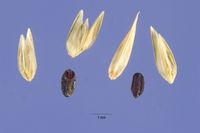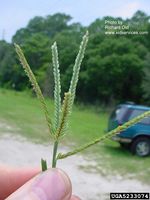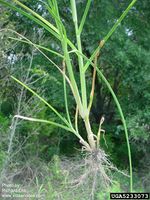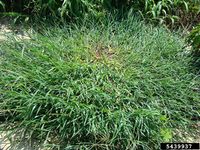Eleusine indica (weed)
| Literature database |
|---|
| 241 articles sorted by: |
| • year (descending) |
| • research topics |
| • countries/regions |
| • affected crops |
| • list of natural enemies |
Eleusine indica (L.) Gaertner - (goosegrass)
Goosegrass is mainly found in warmer regions and cannot tolerate frost. E. indica is a problematic weedy grass in cereals, turf and other crops. In upland rice, crop losses can reportedly exceed 50%. Apart from competition with crops it is also a reservoir of several important plant viruses like Sugarcane mosaic virus. Each plant can produce up to 50,000 seeds which disperse by wind or farm equipment. It favors compact, poorly drained soil.
Herbicides are commonly used for control. However, herbicide resistance has been reported from various populations. Goosegrass has a centralized root system, making mechanical removal possible with the appropriate tool, but labor intensive.
| Vernacular names | |
|---|---|
| • Deutsch: | indische Eleusine |
| • English: | goosegrass |
| • Español: | pata de gallina |
| • Français: | pied de poule |
| • Português: | capim pé-de-galinha |
Plants grow to a height of about 40 cm. The stems have a white base giving the plant a characteristic white centre. The leaves are broad, 5-10 mm wide and the spikes (usually 3-6) often emerge from a common point on the stem. The ligule is short (up to 1 mm) with a jagged margin.
- Other images of Eleusine indica (IPM Images - click to enlarge)




